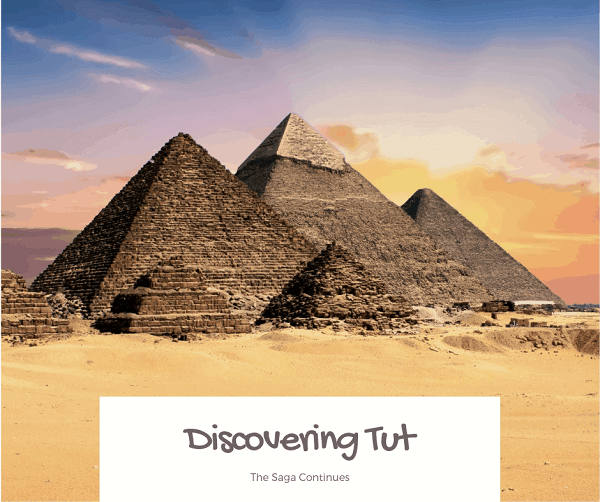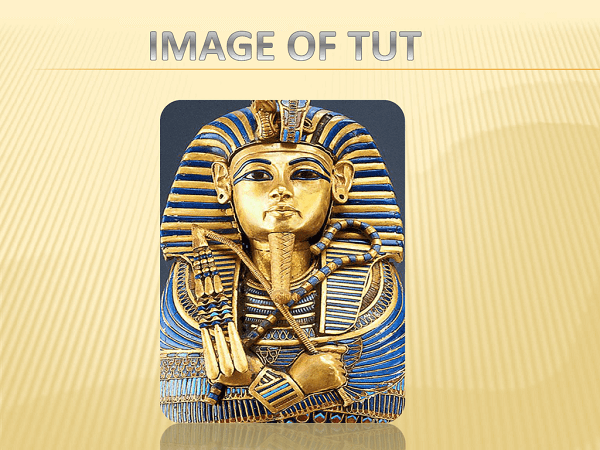Discovering Tut: the Saga Continues Summary Class 11 EnglishIntroductionEgypt's emperors were commonly referred to as pharaohs. They possessed a big empire and an enormous amount of wealth. They had faith in the afterlife, so the king's body was then mummified and placed in a tomb after their death. They used to put a lot of treasure and the basic things of need in the tomb with the dead bodies. It was believed that the king would use the things in their afterlife. The mummy was placed in a decorated tomb, and the tombs were constructed 26 feet below ground level. The last ruler of a powerful dynasty was Tut. Only nine years after getting to the throne, he passed away young. In 1922, a British archaeologist named Howard Carter discovered and investigated his tomb. He struggled to remove the mummy from the solid gold casket. The resins became completely solid. The corpse has been broken down and torn apart. It was put back together and placed in a case at its final burial location. The mystery surrounding his death was ultimately solved when it was taken out again for a CT scan in 2005. No questions remained after the CT scan. No significant issues occurred. In the Valley of the Dead Egyptian Kings, Tut is peacefully buried in his tomb. 
SummaryThe young Egyptian heir to the throne was known as Tut or Tutankhamun. For many years, the royal family ruled Egypt. Tut, however, passed away before his time. He was the last from his family line. His death marked a dynasty's end. However, the circumstances surrounding his death remained unclear. 
Amenhotep III, Tut's biological grandfather or father, was a strong Pharaoh who ruled for almost 40 years. Amenhotep IV, his son, became his successor. The new ruler encouraged the worship of the Aten, the sun-disc. He adopted the name Akhenaten, meaning "servant of the Sun god." He also shifted Thebes's religious centre from the ancient city to the new one. He further shocked the people by attacking the important god Amun, destroying his statues, and closing his temples. He was replaced by a second mysterious king, who died very quickly. A very young Tutankhaten then occupied the throne. He is now widely referred to as Tut. He brought back the traditional practices, including Amun worship. Additionally, he adopted the name Tutankhamun. He ruled for around nine years before passing quite unexpectedly. 1922 British archaeologist Haward Carter made the historical find of Tut's mummy. Perhaps someone killed him. However, he was buried beside plenty of gold and everyday objects like games, a bronze razor, clothing, and cases of food and wine. It was believed Pharaoh would require such items in the afterlife. After years of looking, British archaeologist Howard Carter found Tut's tomb in 1922. The wealth found in the tomb had mostly already been looted. Even then, it was the most valuable royal collection ever discovered in a tomb. The tomb made of granite was 26 feet below the earth. A painting was on each wall. The outer coffin lid featured Tut's gilded face. Carter spent months documenting the riches before he started looking into Tut's three-layered casket. He discovered garlands made of cornflowers, lotus petals, and olive leaves in the first one. The burial appeared to have taken place in March or April. Carter ran into difficulties once he arrived at Tut's mummy. Tut's solid gold casket was sealed shut with resins that had grown extremely hard. The body was stuck in resins, and it was difficult to remove it. It was not melted even by the hot sun. With a chisel and hammer, the resins from below the body's limbs had to be removed. Carter didn't have much choice. If he hadn't dismantled the mummy piece by piece, the gold would have been stolen. Carter's soldiers first chopped off every major joint before removing the mummy's skull. Once the corpse had been divided into pieces, it was assembled on a bed of sand in a wooden box and placed back where it belonged. A professor of anatomy X-rayed the mummy in 1968 and discovered an entirely new fact. He said Tut's body was missing the front ribs and breast bone. With today's CT (Computerized Tomography) technology, a body may be scanned in three dimensions using hundreds of X-rays. On January 5, 2005, the world's most well-known mummy, Tut, was placed on a CT scanner to learn the answers to two important questions: how did Tut die, and how old was he at the time of his death? Siemens, who built the CT scanner, donated it. Almost 3,300 years prior, King Tut had passed away. Workers removed Tut from the tomb and placed him in a box the night before the scan. They mounted it to a trailer that also contained a scanner. It was completed in just three hours. Once more, the Pharaoh was brought back to the tomb. The CT scan eliminated every doubt. Nothing bad had happened. Tut peacefully sleeps in his tomb in the Egyptian Valley of the dead kings.
Next TopicAntigone Summary
|
 For Videos Join Our Youtube Channel: Join Now
For Videos Join Our Youtube Channel: Join Now
Feedback
- Send your Feedback to [email protected]
Help Others, Please Share









